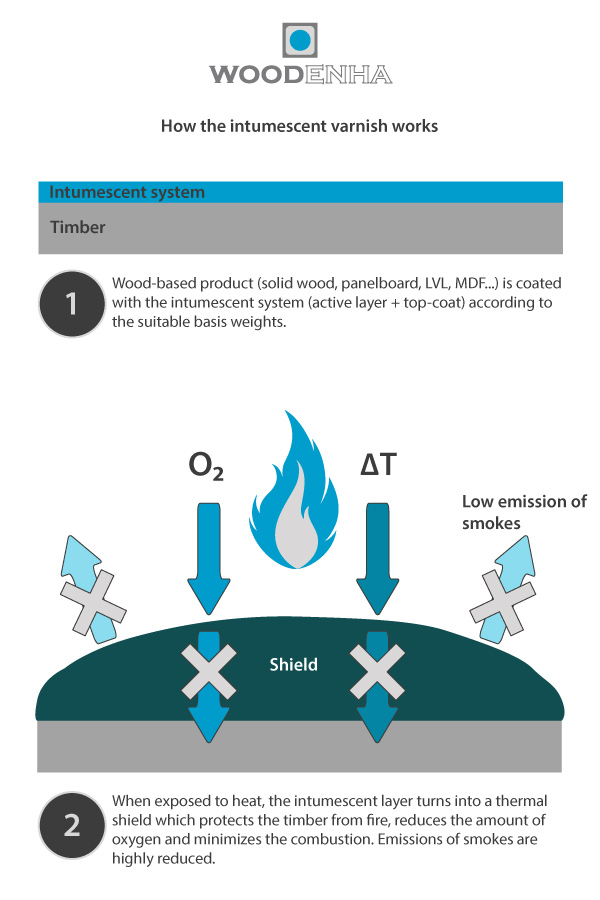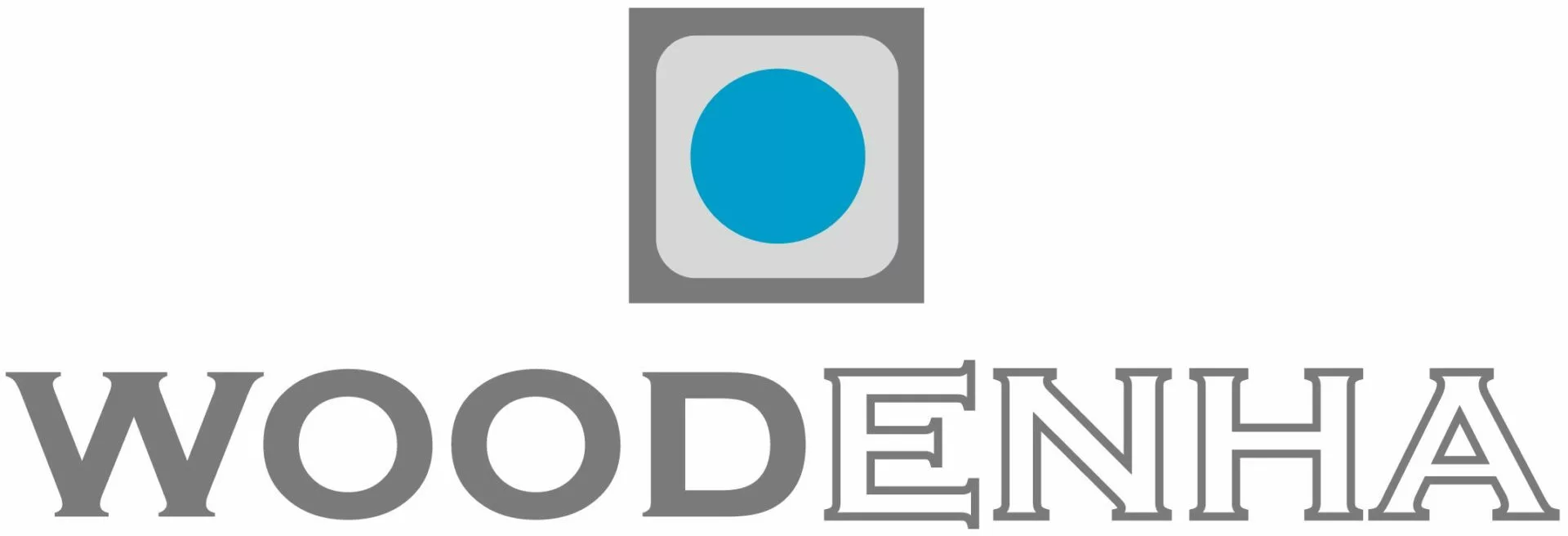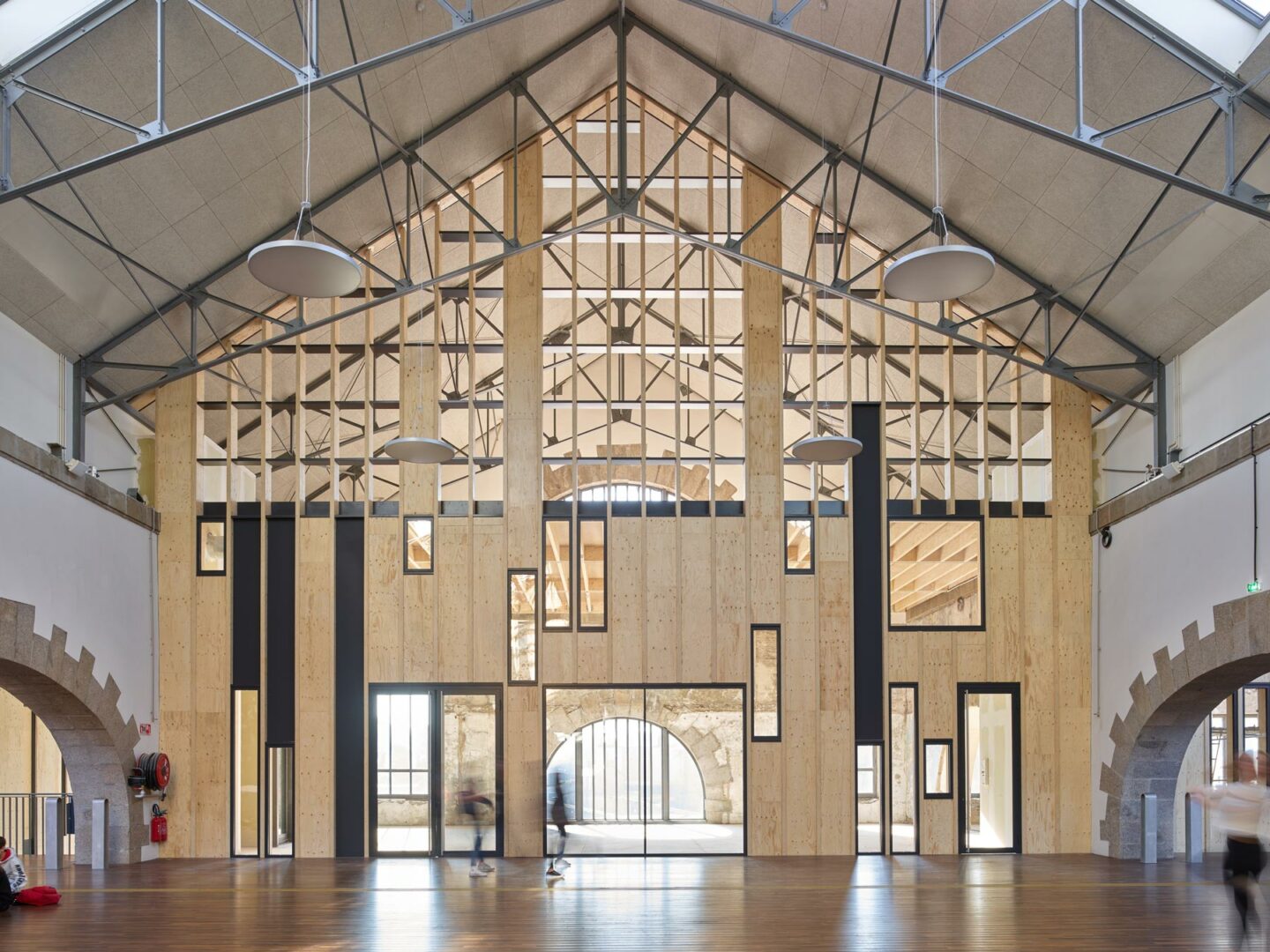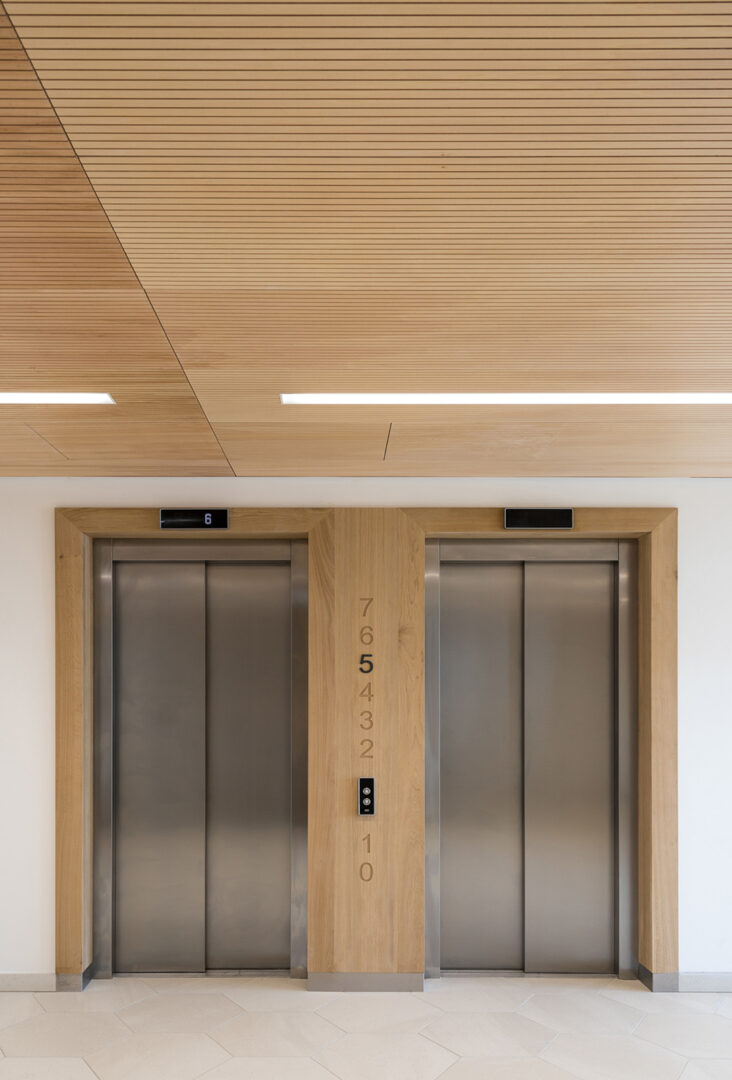Intumescent coatings
Passive fire protection, of which fireproofing is a part, is a tool for conquering the wood products market in the construction of ERP (Establishment Receiving the Public) and interior or exterior fittings. Woodenha Industries has more than 10 years of experience in the fireproofing of solid wood and materials based on natural fibers: many buildings have been built using Woodenha Industries services.
Intumescent paint & varnish
Woodenha Industries uses several types of intumescent finishes in its flame retardant processes :
- Colorless intumescent varnish
- Tinted intumescent varnish on demand
- White intumescent paint
- Tinted intumescent paint on demand
Every of these finishes gives wood a Euroclasse B ,or C using less product.
The application process is carried out in two stages : an intumescent layer, which gives the fire classification to the support, then a non-degrading top-coat which gives an aesthetic visual appearance to the treated element and protects it from shocks , humidity or other attacks.
In contact with fire, the intumescent layer forms a thick crust which isolates the wood from the flames.
Practically, we use intumescent varnish (translucent) or intumescent paint (opaque) to fireproof wood paneling, ceilings, particle board, OSB panels, frames, solid wood walls … This technique is well-suited to large complex parts (very thick parts, curved beams, etc.).
Non-degrading finishes
The top-coat product of the intumescent system may also be used as a stand-alone non-degrading finish onto lumber which already have an improved fire behaviour.
In other words, an interior wood paneling fireproofed by autoclave impregnation can be varnished by applying this varnish without losing its fire classification. The natural beauty of the wood is underlined by a varnish without losing the properties provided by prior fireproofing.
This is also valid for the opaque protective top-coat of an intumescent paint.

Looking for a fire expertise ?
Consult us for the opinion of a Woodenha expert
M1 varnishes and upgrading finishes
This section is about former french standards M which are less used.
Without exception, any finish is composed of a carbon base (resins) and therefore has a capacity to ignite and contribute to spreading fire.
For this reason, the reaction to fire of materials and of wood in particular is always evaluated before any finishing. And in order not to “lose” the fire classification of the material, it is therefore advisable to use a non-degrading (or non-downgrading) finish.
For interior uses, there are varnishes or non-downgrading paints often called by abuse of language “M1 varnish” or “M1 paints”.
For other outdoor uses, two other constraints are added: weather resistance and UV resistance. There are very few tested solutions on the market.
Woodenha Industries has developed a non-derating exterior wood saturator called BIME®F1 which not only has the advantage of not derating the support, but also of maintaining the classification over time, thus protecting the fire-retardant treatment from washing out.
Most finishing products called “M1 varnish” or “M1 paint” do not give any fire classification to their support. They are simply designed not to modify the reaction to fire of the support on which they can be applied. For example :
An M4 wood covered with an “M1 varnish” will remain M4
An M3 wood covered with an “M1 varnish” will remain M3
M2 wood covered with “M1 varnish” will remain M2
An M1 wood covered with an “M1 varnish” will remain M1
These finishes should be described as non-downgrading.


